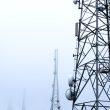Introduction
The modern world is heavily reliant on technology. From communication to education and even business, many aspects of our lives are shaped by advancements in telecommunications infrastructure. However, not all Americans have the same level of access to these technologies. In fact, there exists a digital divide between rural and urban areas as well as disparities in access to education and opportunities for businesses. In this blog post, we’ll examine the unequal impact of telecommunications on American society and explore solutions to bridge this gap. So grab your devices and let’s dive into the digital divide!
The Impact of Telecommunication Infrastructure on Rural and Urban America
Telecommunication infrastructure has a major impact on the way people in America live, work and connect with one another. However, there are stark differences in how rural and urban areas experience this impact.
In rural America, connectivity can be a major challenge. Many small towns lack the necessary infrastructure to support high-speed internet connections or even reliable cell service. This means that residents may struggle to access important services like healthcare, education or job opportunities that require an online presence.
On the other hand, urban areas tend to have much better connectivity options available. High-speed broadband is often widely available and many businesses offer free Wi-Fi to customers. This can make it easier for city-dwellers to stay connected with their community and take advantage of digital resources.
Ultimately, the divide between rural and urban telecom infrastructure can exacerbate existing inequalities between different regions of the country. Addressing these disparities will require sustained investment from both public and private partners to ensure that all Americans have access to reliable communication services regardless of where they live.
The Digital Divide in Education
Education is one of the most essential aspects of society, and it goes without saying that access to information can make or break a student’s future. Unfortunately, the digital divide has created significant barriers to education for many students in America.
In today’s world, where technology plays an integral role in our educational system, students who lack access to digital resources are at a severe disadvantage. Without proper internet connectivity and hardware devices like laptops or tablets, students cannot participate fully in e-learning programs or online classes.
The disparities between urban and rural schools also contribute heavily to the digital divide. Many inner-city schools have been able to secure funding for updated technology infrastructure while small-town schools struggle with outdated equipment and inadequate broadband connections.
This lack of adequate technological resources affects not only primary education but extends into higher education as well. Students from low-income families often find themselves unable to afford college textbooks or online courses necessary for their degrees because they don’t own personal computers or high-speed internet connections.
The consequences of this divide can be devastating: lower test scores, limited job opportunities due to inadequate training on modern systems used by employers – leading ultimately back into cycles of poverty perpetuating further inequality.
The Impact of the Digital Divide on Businesses
The digital divide has a significant impact on businesses, particularly those in rural areas. Often, these companies struggle to compete with their urban counterparts due to the lack of reliable internet access and technology infrastructure.
Without proper connectivity, rural businesses face challenges when it comes to communicating with customers and suppliers. Additionally, they may miss out on opportunities for online sales or marketing through social media platforms and other digital channels.
This lack of access also limits the ability of rural workers to telecommute or work remotely, which can reduce job opportunities and limit economic growth in these areas.
Furthermore, as many industries continue to rely heavily on data analysis and cloud-based systems, the inability to access high-speed internet puts rural businesses at a disadvantage compared to their urban peers who have better infrastructure.
Addressing the digital divide is crucial for ensuring that all American businesses have equal opportunities for success regardless of location. By investing in telecommunications infrastructure in underserved areas across America’s cities and towns alike we can ensure every business owner has an equal chance at building a thriving enterprise while contributing positively towards our economy’s growth.
Solutions to the Digital Divide
One solution to bridging the digital divide is through government-funded initiatives that provide broadband infrastructure and technology access to underserved areas. These programs can help bring high-speed internet to rural communities, schools, and libraries. Additionally, private partnerships with businesses and internet service providers can also contribute to expanding connectivity across America.
Another solution is increasing digital literacy training for those who lack technological proficiency. This includes education on how to use computers, smartphones, and other devices as well as online safety measures. Digital skills are increasingly necessary in today’s job market and improving the digital literacy of disadvantaged individuals can increase their opportunities for employment.
Community-based organizations such as non-profits or churches can work towards providing affordable or free computer resources and internet services – particularly for low-income families who may not have the financial means to purchase expensive technology themselves.
Solutions will vary from location-to-location based on underlying causes of inequality but overall collaboration between public-private sectors alongside educating citizens holds great promise in addressing this pressing issue.
Conclusion
It is clear that the digital divide in America has far-reaching consequences, affecting rural and urban communities, education systems, and businesses. While advancements in technology have brought about many benefits to society, it’s important not to overlook those who are being left behind due to a lack of access or resources.
Fortunately, there are solutions available for bridging this gap. Governments can invest in expanding telecommunication infrastructure to underserved areas, while educators can work towards providing equal access to technology for all students. Additionally, businesses can play a role by offering training programs and support for employees who may be struggling with the digital age.
Closing the digital divide will require a collective effort from individuals as well as organizations across various sectors. Only then will we truly begin to see the positive impact that telecommunications can bring on American society as a whole.












